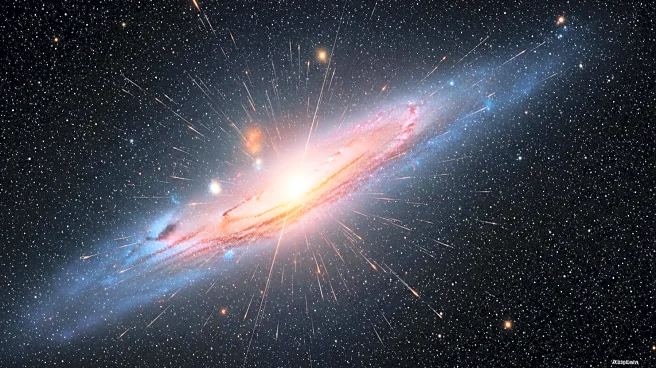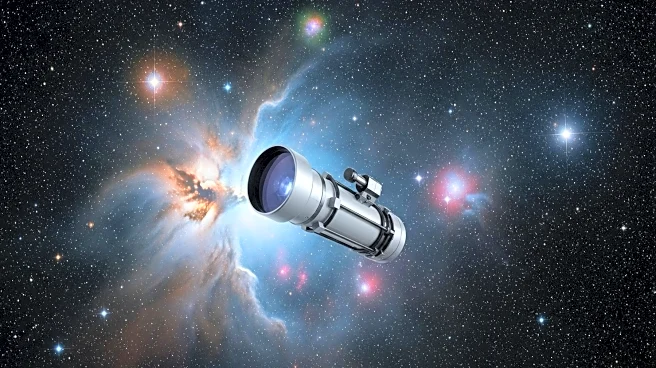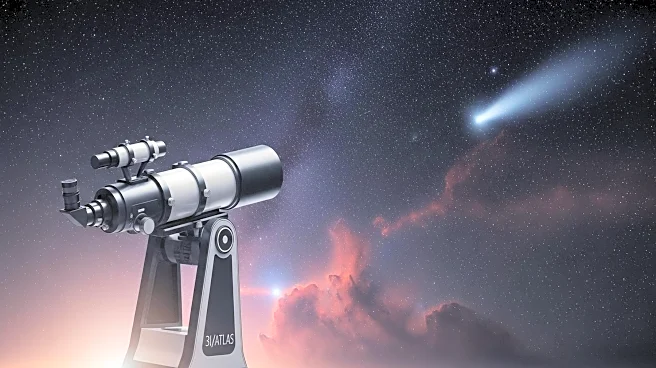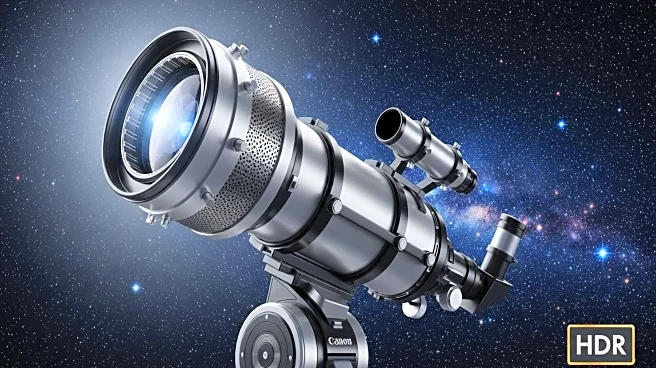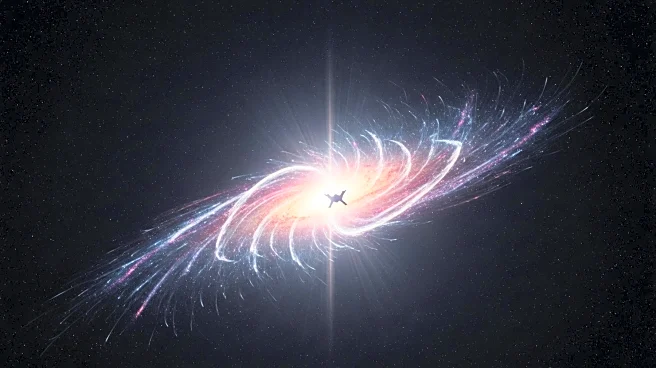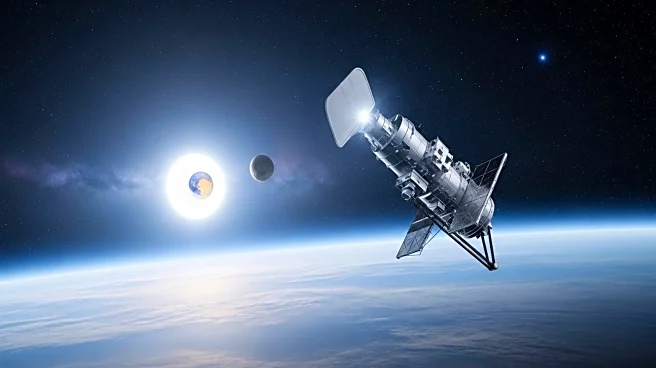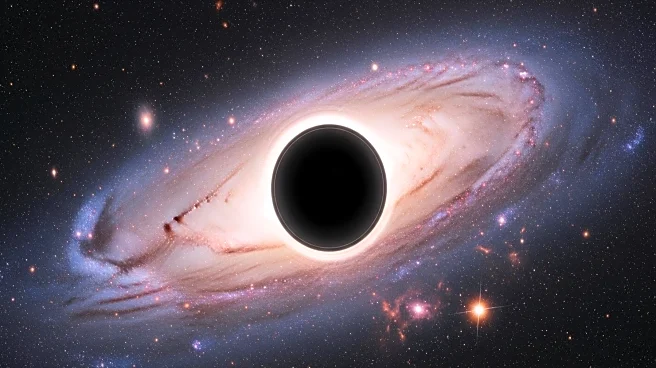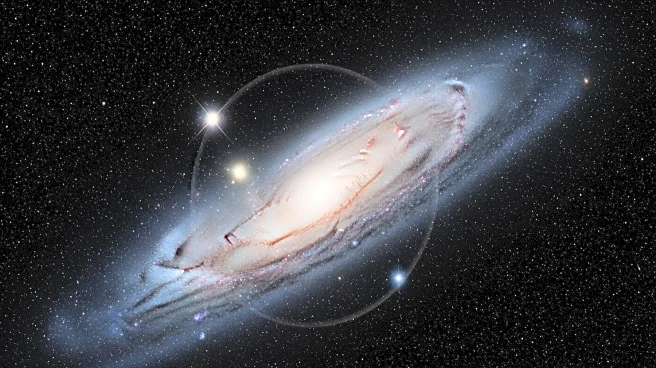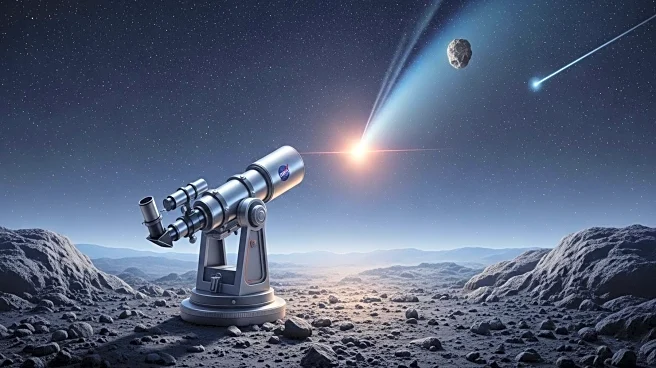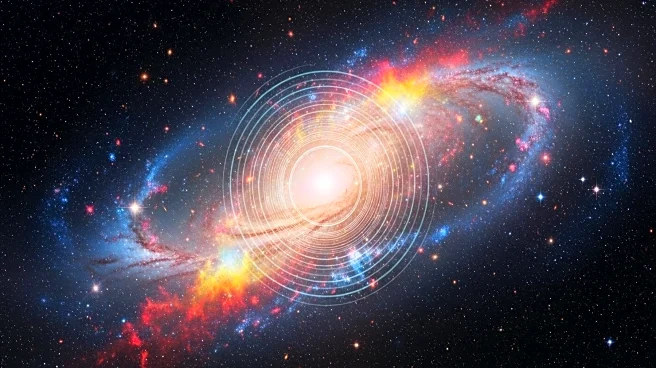What is the story about?
What's Happening?
An international team of astronomers has successfully pinpointed the location of the brightest Fast Radio Burst (FRB) ever recorded, named FRB 20250316A or RBFLOAT. This discovery was made possible through the use of the Canadian Hydrogen-Intensity Mapping Experiment (CHIME) and its Outrigger array, which allowed for precise localization of the burst within a nearby galaxy, NGC 4141, located about 130 million light-years away. The burst, detected on March 16, 2025, lasted only a fraction of a second but was significant enough to outshine all other radio sources in its galaxy. The precise localization of this FRB marks a significant advancement in understanding these mysterious cosmic phenomena.
Why It's Important?
The ability to pinpoint the location of such a bright FRB is a major breakthrough in astrophysics, as it provides a clearer understanding of the origins and nature of these bursts. This discovery could lead to new insights into the extreme astrophysical phenomena that cause FRBs, which remain one of the most enigmatic aspects of modern astronomy. The findings challenge existing theories about FRBs, particularly the notion that all such bursts repeat, suggesting that some may have more explosive origins. This could reshape scientific approaches to studying the universe's most powerful radio sources.
What's Next?
Following this discovery, astronomers are likely to conduct further observations using advanced telescopes like the James Webb Space Telescope to gather more data on the environment surrounding FRBs. This could help identify the types of stellar environments that give rise to these powerful bursts. Additionally, the scientific community may revisit existing models of FRB origins and consider new theories that account for non-repeating bursts. The findings could also inspire further technological advancements in radio astronomy to enhance the detection and study of FRBs.
AI Generated Content
Do you find this article useful?
